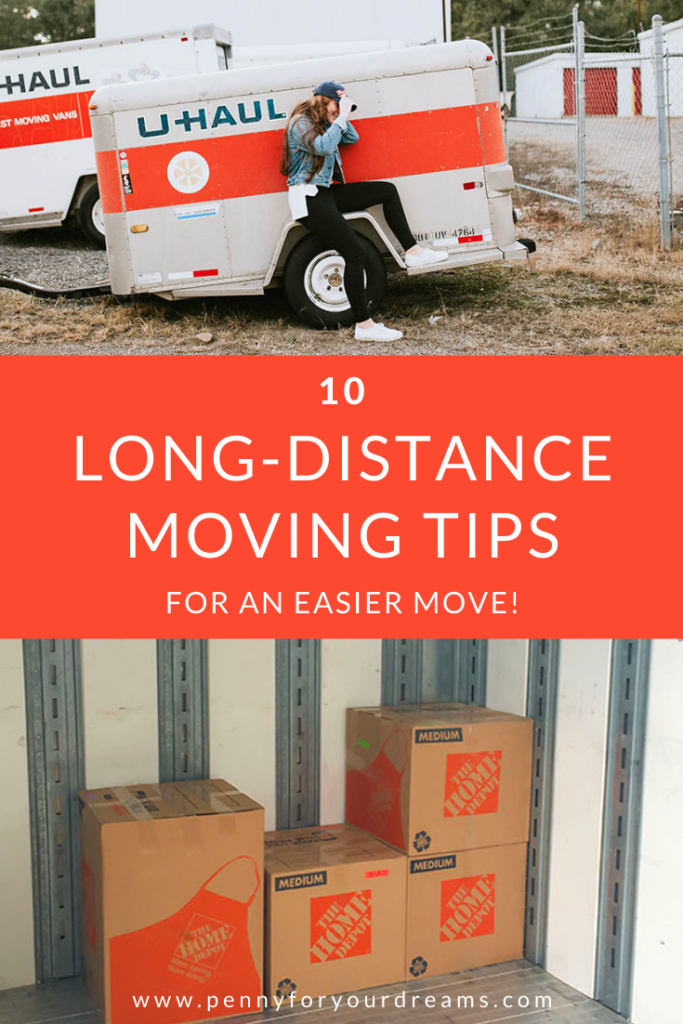
Recently, I shared how we pulled off a 2,500 mile, long-distance move on a budget, and today I’m following up with some awesome long-distance moving tips!
I grew up as the daughter of a home builder, and we moved a lot. By the time I was 14-years-old, I’d already moved 11 times—all in the same area! I have early memories of helping my mom pack boxes, and later memories of packing every. single. box. for our move when I was 14.
Since then, I’ve added 5 more moves to the list, 3 of which were out of state. Moving long-distance is definitely more complicated than moving across town!
For our most recent move, my husband and I relocated from Vancouver, Washington to Birmingham, Alabama—no small feat, I can assure you! But we made the most of it and road-tripped over 3,000 miles to our new home.
Through all of these moves, I’ve learned a lot—both what to do, and what not to do. So I want to share my best long-distance moving tips with you because I know just how difficult it is to pack up your entire life.
10 Long-Distance Moving Tips

1. Declutter Early
Don’t wait until the last minute to declutter! If you’re in a hurry, you’ll be less objective. It’s harder to make decisions when you feel rushed or pressured.
If you’re using shipping containers to move your belongings, you’ll be limited to the space you have reserved, so keep that in mind.
Typically, the fewer things you have to move, the cheaper your move will be. Plus, the less you have to pack into boxes, the less you’ll have to unpack into your new home later on!
I love this quote by William Morris:
“Have nothing in your house that you do not know to be useful, or believe to be beautiful.”
Those are words to live by. How often do we let useless junk accumulate in our drawers and closets and cabinets?
I always find moving to be the perfect time to lighten the load.
Think about it! At what other time will you be taking everything you own out of the nooks and crannies of your house?
Even though I tend to be more minimalistic when it comes to my belongings, I still end up decluttering plenty of boxes when moving time comes around.
2. Sell What You Can
Making some extra money on what you no longer want or need goes hand in hand with decluttering!
Selling on OfferUp and Facebook Marketplace are my two favorite ways to get rid of furniture, decor, baby gear, appliances, and pretty much anything else that’s worth taking the time to list.
Furniture is one of the most expensive things to move, so consider keeping your favorite pieces, and selling the ones you’d like to replace anyway!
If you’re buying used furniture later on, you can often replace it for the same price you sold it for.
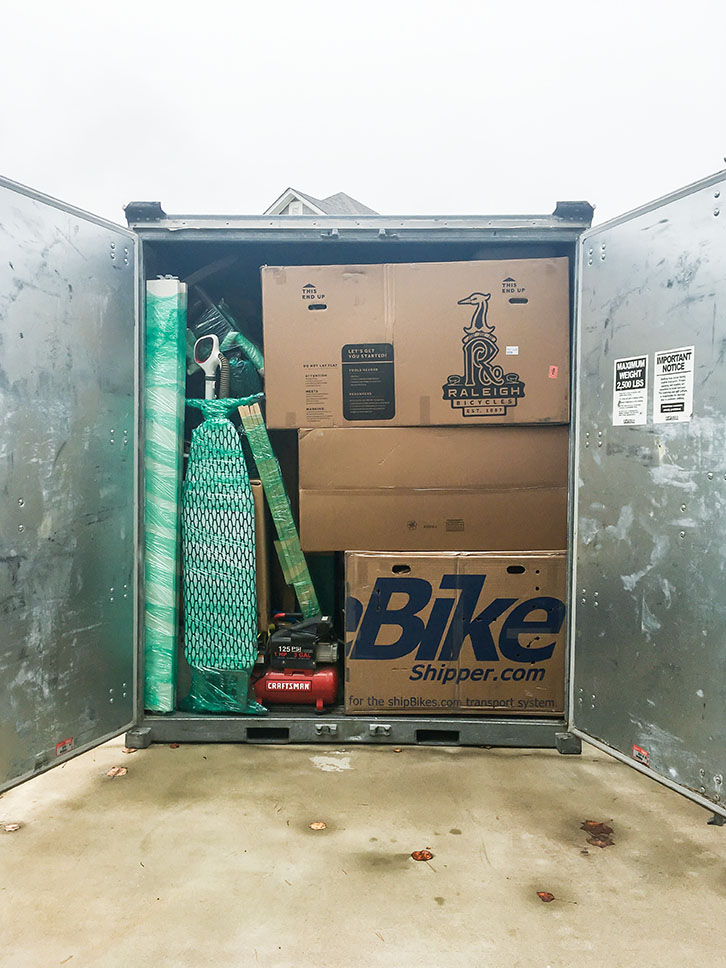
3. ReloCubes
If you’re moving long-distance, I highly recommend looking into a company called U-Pack. In our experience, they were very professional, well-organized, and had the best rates.
We used 2 of their ReloCubes, and our small 2-bedroom apartment fit perfectly! It was smooth sailing every step of the way.
In fact, I wrote an entire post about our experience with U-Pack and our long-distance move on a budget if you’re interested in learning more.
(I’m not sponsored or anything—just a very happy customer!)
4. Don’t Pay for Boxes
Please, please don’t pay for boxes! You can save so much money by finding them for free.
Save shipping boxes you receive in the mail, look for empty ones on trash day, dumpster dive, and let friends and family know you’re looking for moving boxes.
You can also ask liquor stores for boxes with inserts for fragile items, and check places like Craigslist and Facebook Marketplace for piles of free boxes from other people who have just moved.
There are so many places you can find perfectly good, lightly used boxes for moving!

5. Color-Code Your Moving Boxes
This is one of my favorite long-distance moving tips!
Use stickers to color-code your boxes by room. You can also number them based on the priority in which you want to open them.
Personally, I like using a system like this so that I don’t need to write on every single box.
You can keep it simple, or get really nerdy with it.
If you want to keep track of which items are in certain boxes, you can also create a corresponding spreadsheet. Once everything’s been boxed up for a few days, it’s hard to remember what’s inside.
Log each box in the spreadsheet as you go so you don’t lose track of each box’s contents. After a while, the boxes all start running together!
A spreadsheet can be especially helpful if you’ll be moving to a temporary living situation and don’t plan to unpack everything.
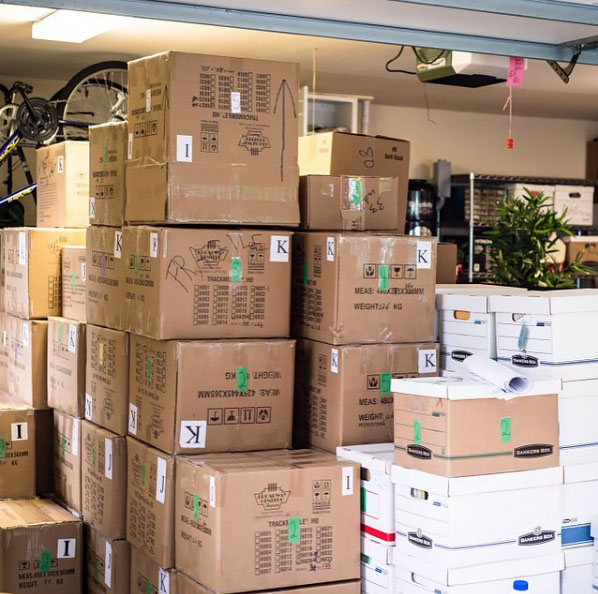
Here’s how I kept track of our boxes during our last move:
- Color-code each room (e.g. kitchen = red, family room = blue)
- Prioritize each room (1 = open immediately, 3 = do not/ no need to unpack)
- Number each box and log it in the spreadsheet (e.g. 1 is the first box packed, 2 is the second, etc.)
For example…
A box with a red sticker numbered #1-7 would be a Kitchen box that needs to be opened immediately, and was the 7th box packed. When I look at Kitchen box #7 in my spreadsheet, I see that it’s full of kitchen essentials that will make our life much easier (paper plates, silverware, etc.)!
Once you’re ready to move into your new home, let everyone helping out know about your color-coded system.
Create a color-coded key—like a cheat sheet—to post on the front door so that everyone knows which colors go in which rooms.
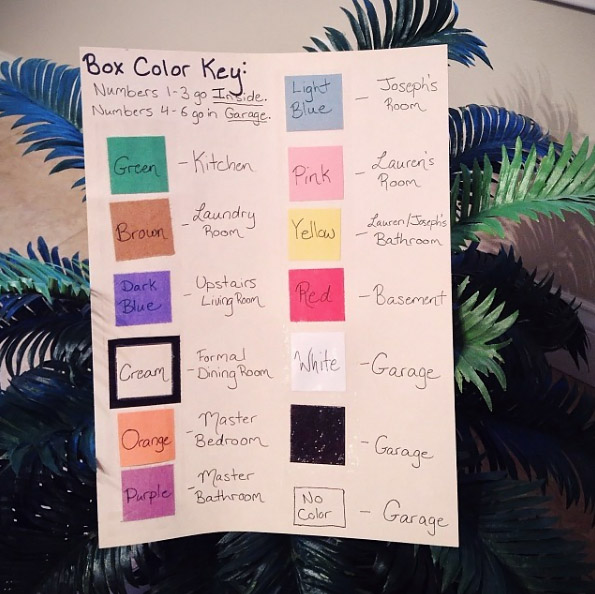
6. Freezer Meals
Here’s one you may not have thought about! Prepare some freezer meals for the long-days of packing and moving.
Once you start packing up your kitchen, cooking starts to become more challenging. Takeaway food will get old fast, and you’ll be wishing for more home cooked meals.
That’s where freezer meals come in handy! They’ll save you money and keep you eating healthier food during the long days and nights of moving house.
I like using foil containers from Dollar Tree that I can easily pull out of the freezer and pop into the oven. No small appliances, cutlery, or baking dishes necessary!
And don’t forget—disposable plates and silverware will be your best friend.
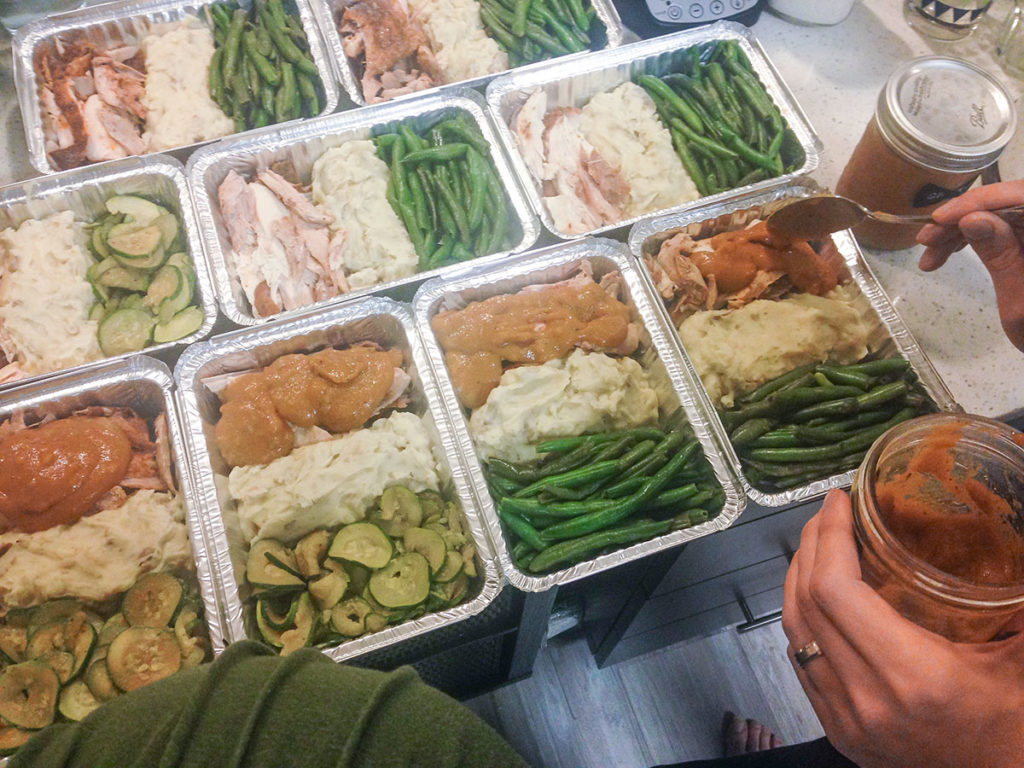
7. Clearly Mark Fragile Items
Consider buying some bright red FRAGILE labels to cut down on the number of times you have to scrawl FRAGILE on the sides of your boxes. Those bright red stickers are more obvious to movers, too.
8. Pack in the Cracks
Every inch of space counts, so pack in the cracks!
Fill up partially empty storage containers. Pack your suitcases if you won’t be using them. Get creative with it!
I even stacked my toddler’s large Megabloks together. They took up about half the space in their storage bin, and I used the other half for packing more toys!
9. Towels
Use your towels to wrap breakable things. This is a great way to protect those especially fragile items.
You will have to refold your towels later, which is annoying, but towels offer excellent protection against the bumps and bruises boxes get along the way.

10. Snap a Few Quick Photos
Take pictures of your bookcases and decorative shelves before you start packing them. Then, when you’re setting up your new home, you’ll know exactly how you had them set up before.
This quick tip will save you so much extra time and work!
Share Your Best Long-Distance Moving Tips
Moving is a ton of work, and can upset your life for quite a while, so I hope these tips will help make your life just a little bit easier!
If you have experience with an out-of-state or cross-country move, I’d love to hear about your best long-distance moving tips!









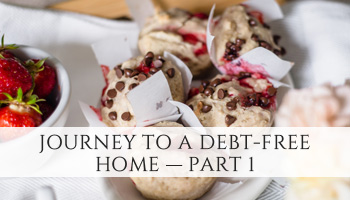


I’m preparing for a long distance move next year, and I honestly never would have thought about freezer meals! Thank you for that tip!
Thanks, Katherine! So happy you found it helpful! 🙂
Found this very helpful. Thanks!
My husband and I are moving from 3,000 miles and your moving tips are incredibly helpful, THANK YOU!!
Lots of valuable insight and information. Looks like you mastered long distance moving. Thank you for sharing.